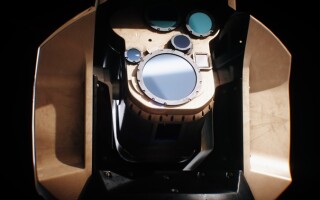U.S. Navy's airborne mine detection system achieves initial operational capability
NewsJanuary 12, 2017

MELBOURNE, Fla. Northrop Grumman's-built AN/AES-1 Airborne Laser Mine Detection System (ALMDS) for the U.S. Navy has reached initial operational capability.
The AN/AES-1 ALMDS is mounted on the U.S. Navy's MH-60S Seahawk helicopter, say officials. It provides reconnaissance and assessment of mine threats in sea lanes, littoral zones, confined straits, choke points, and amphibious areas of operations. It also leverages a sensor pod to sweep the water using laser technology.
“Using forward motion of the aircraft, ALMDS’ pulsed laser light generates 3-D images of the near-surface volume to detect, classify, and localize near-surface moored sea mines,” says Mark Skinner, vice president, directed energy, Northrop Grumman. “Highly accurate in day or night operations, the untethered ALMDS sensor conducts rapid wide-area searches with high accuracy.”
Northrop Grumman engineers have integrated and demonstrated the ALMDS on a UH-60M Blackhawk helicopter.
Read more on mine detection systems:
Collaboration between U.S. Navy and Raytheon improves mine-hunting sonar
U.S. Navy receives first delivery of upgraded AQS-24B mine hunting sonar
Mine hunting system demonstrates synthetic aperture sonar processing









